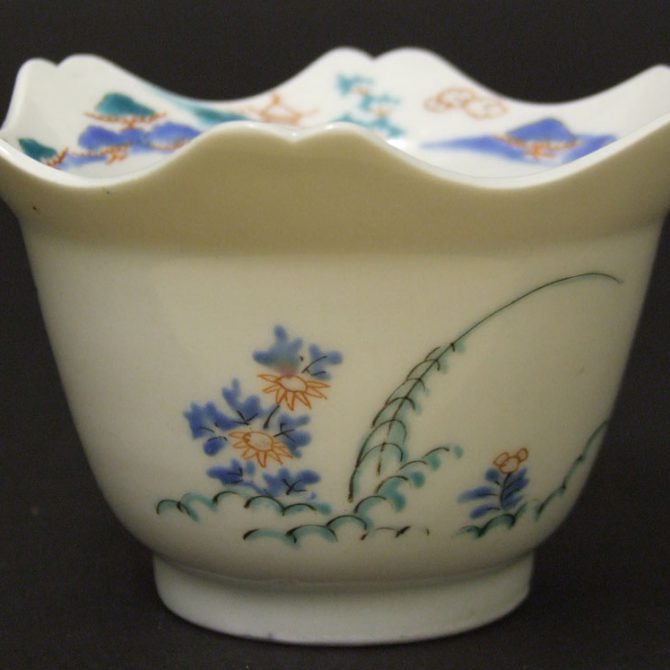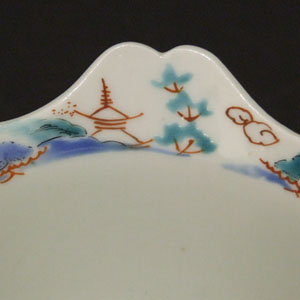
KAKIEMON c.1680 – 1690 Japanese Porcelain
A Fine 17th Century Kakiemon Porcelain Bowl. The Bowl with a Nigoshide Body has a Raised Everted Rim Shaped, Possibly Intended to Represent Mountains. It is Delicately Painted with a Landscape to the Interior with Two Shells Among Marine Plants to the Well. The Exterior is Sparely Painted with Grasses, Flowering Plants and a Pair of Birds Flying Above.
SOLD
- Condition
- Perfect.
- Size
- Diameter : 10.1 cm (4 inches) Height : 6.6 cm (2 2/3 inches)
- Provenance
- N/A
- Stock number
- 23060
- References
- For a very similar 17th Century Japanese Kakiemon Porcelain bowl see : Shibata Collection Part 5, The Creation and Development of the Enpo Style (The Kyushu Ceramic Museum, Saga Prefecture, Akihiko Shibata and Yuko Shibata and others.1997) page 119 plate 163.
Information
Kakiemon Porcelain :
Kakiemon decoration is usually of high quality, often delicate and with well-balanced asymmetric designs. The designs were normally quite sparse emphasizing the fine white porcelain body known in Japan as Nigoshide (milky white). The opaque white milky Nigoshide body was used on the finest pieces, it appears that it was reserved for fine quality enamelled decoration. Kakiemon porcelain was decorated with a great variety of imaginative designs which include elements such as the `banded hedge`, `flying squirrel`, and the `Quail and Millet` design. The `Three Friends of Winter` were also a very popular group of designs, other subject taken from nature include flowers (especially the chrysanthemum, the national flower of Japan) as well as birds and rock-work. Figural subjects such as the `Hob in the Well` were also popular. This design illustrates a Chinese folk tale where a sage saves his friend who has fallen into a large fish-bowl by throwing stones at it, braking open the pot. Banded-Hedges were a formal device within Japanese traditional gardens, they were often incorporated in designs, includes `The Three Friends of Winter` (Pine, Bamboo and Prunus). These three plants signify perseverance, as neither the pine nor the bamboo shed their leaves in winter and the plumb (Prunus) flowers at the very end of the winter, heralding the arrival of spring.
Nigoshide Body :
The Nigoshide (milky white) body was a new whiter porcelain body introduced between about 1660 - 1680, solely for use on Kakiemon Wares. Indeed the Kakiemon Palette evolved at the same time. It has recently been proposed that the Nigoshide Body is not a new body at all, rather it is just made from a clay that has been levigated and washed more thoroughly.
